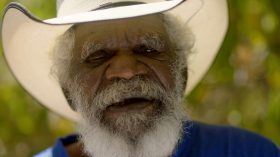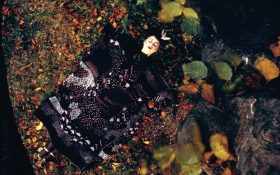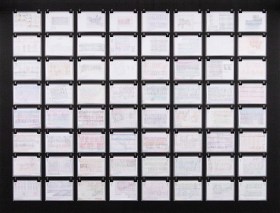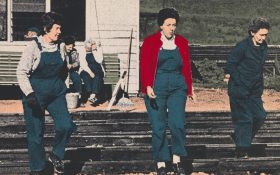Telching Hseih, One Year Performance 1980-1981
Words like ‘inspirational’ and ‘legendary’ are bandied about willy-nilly these days. However in the history of contemporary art, Tehching Hsieh does befit such adjectives.
The Taiwanese-born, New York-based artist undertook a series of year-long durational performances throughout the late 1970s and early 1980s. At the time Hsieh’s work was for the most part overlooked by the mainstream art world but has recently been recognised via the publication of a significant monograph, and solo exhibitions at major US museums.
The show at Carriageworks is concerned with the 1980-81 work known as Time Clock Piece and takes the classic approach to exhibiting performance art after the fact, including all relevant documentation and detritus arising from the work.
In the entrance hallway to the main exhibition space, a number of framed notices announcing Hsieh’s intention to perform Time Clock Piece and several other One Year Performances are displayed chronologically. This includes his first durational work, which spanned 1978-79 and saw the artist confined to a cell within his studio, and the performance Art/Life where Hsieh and fellow artist Linda Montano remained tied together with an eight-foot rope for an entire year over 1983-84.
These introductory documents establish the context of Hsieh’s practice, while a vitrine in the exhibition space contains the materials specific to Time Clock Piece. The statement and explanation documents describe the conditions of the artist’s undertaking: ‘I shall punch a Time Clock in my studio every hour on the hour for one year… With a 16mm movie camera, I shall document each time I punch the Time Clock by shooting one frame.’ The vitrine also contains signed witness statements ‘to avoid any suspicion of cheating’ and part of the grey military-like uniform Hsieh wore throughout the year.
The exhibition itself features the timecards for each day of Hsieh’s performance, set above the corresponding film strips. These columns continue around all four walls of the space. Also included is a 16mm film playing each still at speed, drawing attention to the artist’s gradually lengthening hair (he shaved his head before commencing One Year Performance to mark the passing of time more visibly). Hsieh’s smooth head, neatly pressed clothes and rigid posture gradually give way to an unruly black mane, crumpled attire and an exhausted slump – sometimes the artist seems almost unable to keep his eyes open for long enough to expose the film still.
The punch cards also mark any hours missed and why – sometimes due to being early or late but usually because of sleep. I find myself seeking these out then examining the corresponding film stills for signs of extreme fatigue or comparative restfulness. In the final images in the set, I was tickled to discover the hint of a smile on the artist’s face as he neared the end of his epic feat. It is intriguing how such a methodical approach, developed to betray very little of the artist’s emotional or inner world, can encourage this in the audience.
Hsieh’s highly disciplined approach to simply passing time will always endure with audiences. The political tone such a work takes on when exhibited in Australia in 2014 is undeniable, however it reaches much further than that as a timeless enquiry into the human condition. Through exhibitions such as this one, Tehching Hsieh is being properly written into art history – better late than never.
Rating: 5 out of 5 stars
One Year Performance 1980-1981
Tehching Hsieh
Carriageworks, Wilson St, Eveleigh
www.carriageworks.com.au
29 April – 6 July





